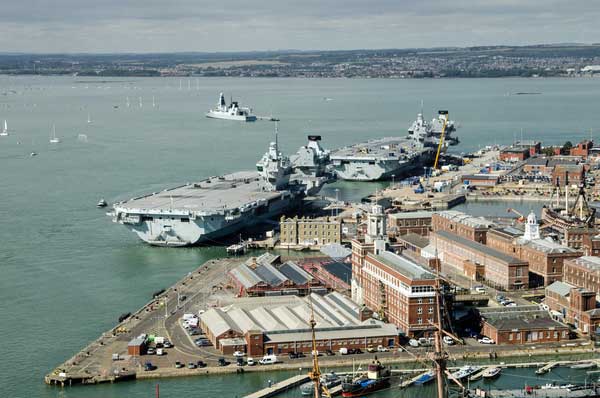Aircraft carriers are massive ships that act as mobile airbases for thousands of crew members and aircraft, including supplies for the human crew, such as food and water. U.S. aircraft carriers can stay at sea for long periods, and most of the time, they are far away from home. Sailors and crew members don’t have the luxury of stopping at ports to restock on fresh water. Therefore, the U.S. Navy has adopted desalination as a way to keep the crew and sailors hydrated on long missions. Desalination is the process of turning salty seawater into drinkable fresh water, and it involves removing salt and other minerals from seawater to make it safe to drink.

The U.S. Navy uses a membrane-based reverse osmosis process for desalination, forcing seawater through a series of filters to remove salt and other minerals to make it drinkable. The health and well-being of the entire crew depend on checking and maintaining the desalination machines on a regular basis. Although desalination on aircraft carriers sounds new and technical, the process has been around for thousands of years. In ancient times, people used to evaporate seawater to get rid of the salt and other impurities. However, with technological advancement, scientists and engineers have developed more advanced methods of desalination, including distillation and reverse osmosis.
Reverse osmosis desalination involves five main steps: pre-treatment, pressure, separation, post-treatment, and storage. In the pre-treatment stage, the water to be treated goes through a process where larger particles and impurities like sediment, chlorine, and other organic matter are removed. After the pre-treatment process, the water is put under high pressure, which helps push it through a semi-permeable membrane. In the separation stage, as the water is forced through the membrane, the impurities and contaminants are separated and left behind, forming what is called the reject stream. The clean water that passes through the membrane is collected as the permeate stream.
In the post-treatment stage, the permeate stream is treated to ensure that it is completely pure and safe for consumption. The treatment here may include adding minerals back into the water for taste, adjusting pH levels, or further sterilizing the water with UV light or chlorine. Finally, after the post-treatment stage, when the safety of the water is guaranteed, the purified water is stored in a tank or container to be used as desired.
Reverse osmosis was introduced into the Navy during the late 1980s, and almost immediately, reverse osmosis desalination plants quickly replaced the conventional water distillers formerly used for the shipboard production of fresh water. The newer reverse osmosis plants also proved to be highly reliable, generally performing at levels exceeding 98%.
One challenge with the reverse osmosis desalinator machines is that they consume a huge chunk of shipboard fuel, as they run off the same generators that power the ship’s other systems. Therefore, researchers are continually developing ways to improve the efficiency of the reverse osmosis process.
In conclusion, desalination is a crucial process that helps sailors and crew members on aircraft carriers to have fresh drinking water while on long missions. The process has been around for thousands of years, and with technological advancements, it has become more efficient and reliable. The U.S. Navy has been using the reverse osmosis system to provide drinkable water for its ships for a long time. However, the machines consume a significant amount of fuel, making the process unsustainable. Scientists and engineers are continually working to improve the efficiency of the reverse osmosis process to make it more sustainable for the long-term.
